Library History
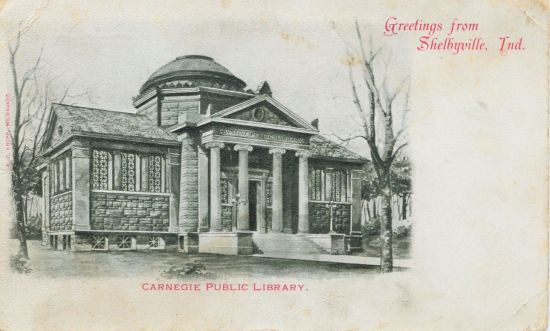
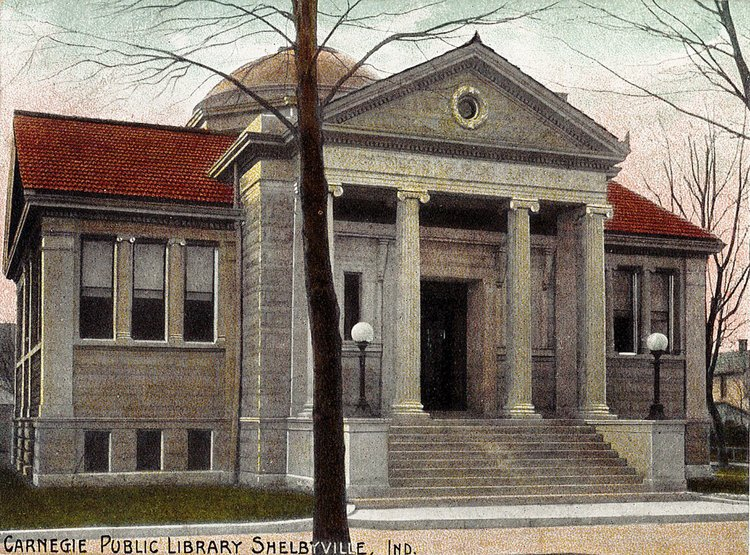








In November 1897, the Shelbyville Community High School hosted the county's first public library, devoting 1,000 volumes and two rooms to a collection. In an attempt to expand the library services and fund a separate library building, school trustees applied for a $20,000 grant in 1901 from Andrew Carnegie. The money requested was approved, and construction was completed on June 2, 1903.
This building served until 1966, when the children's room and elevator were added. County Contractual Library Service started in 1967, and the Mobile Library began driving books to those outside the city in 1968. This service continued until 2015.
In 1975, the library district expanded to include all of Shelby County, and in 1985, property adjacent to the library was purchased to begin a building project. The firm, Bohlen, Meyer, Gibson, and Associate were chosen in 1991 to begin the building project's work. Ground breaking for the expansion took place in 1993 and was finished in 1994, when the chandelier was installed. Renovation of the Carnegie building was completed in early 1995. Space was rented from the Town Hall for the Genealogy and History Room in 1998.
The library continued to accommodate for growth. Three homes behind the library were demolished to provide for additional parking; one home was converted into a Genealogy and History House. In 2007, the Kiefer building adjacent to the library was purchased to house the Genealogy and History Department of the library. After demolition was considered, plans to renovate the 1887 structure were drafted in 2008. Renovation began in July 2009 and was completed in 2018 with the help of a $2 million General Obligation Bond issued in 2017. The bond also covered expenses for: replacement of the roof, including the skylight and the copper on the dome, which is over 100 years old; a new HVAC system in the main library; and the back parking lot renovations.
In 2017, the library was awarded a $150,000 Blue River Community Foundation's Ignite Grant to install a community plaza between the main library and annex. These renovations and construction were completed in 2018. The stage was wired for electricity and has lights under the roof and below the stage. A few tables and umbrellas made this a perfect place to rest and read or to host fun library events.
In 2021, the library received $1.4 million in a General Obligation Bond to respond to the community’s needs in a library. Youth Services Department completely renovated its space. Added were a sensory wall, a sensory cube, and a puppet stage in the play area. The Program Room was expanded to allow more children to participate. A Gaming Room (for computer gaming) and a Sound/Video Room was added. New shelves and age-appropriate furniture were placed throughout the department.
This bond in 2021 made possible large changes in the Adult Services Department. New flooring was added throughout the library, and all the walls were painted. The adult circulation desk was updated to better serve patrons. The window balcony seating area (to the left from the circulation desk) was opened up for seating by the tall, light-filled windows, as well as special monthly displays. The Keystones were painted to match the wood instead of degrading them with sanding down and staining. All Large Print books were moved to the old Carnegie building side for ease of circulation. History books were moved to a History Corner just off the balcony, while magazines and newspapers have settled directly below the balcony reading nook.
An open house held on Sept. 9, 2022, saw hundreds of people tour the library and annex while enjoying music and food at the plaza outside. All of these renovations positioned the Shelby County Public Library to better serve patrons in the 21st century and beyond.
The library's branch in Morristown first opened in Morristown High School in 2012 and then moved to the Town Hall in 2013.
The Morristown Literacy Council was instrumental in establishing the library branch in 2012 and continues its support.
After growing out of the Town Hall location, the library was moved into the old Shelby County Bank in 2014 and named after Velma Wortman, the first high school librarian at Morristown High School.

Mrs. Wortman was born in 1910. She had been a teacher in Marion, Gary and Shelby counties.
When she began teaching, she earned $100 per month. She taught high school English and theater.
While teaching at Morristown High School, she became the school's first librarian.
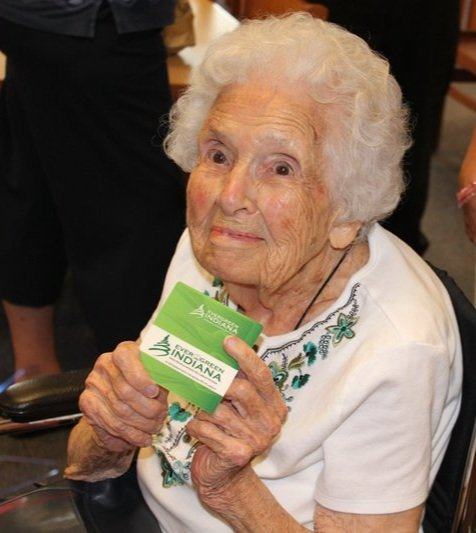
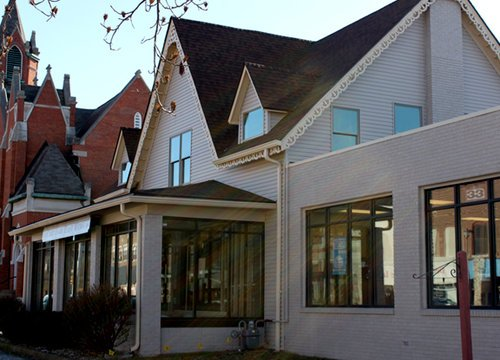
The property at 33 W Broadway St. has been a staple in downtown Shelbyville for over a century.
Elbridge Gerry Mayhew, nephew of the Governor of Massachusetts, Elbridge Gerry, came from Martha’s Vineyard and built the home in 1887.
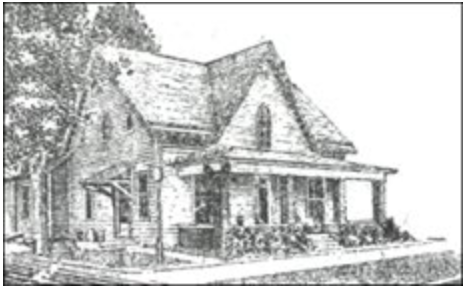
Later, it housed the Ralph J. Edwards Funeral Home. Fleming Furniture Home, operated by Frank and Marie Fleming, eventually took over the space in 1945. They sold the business to Dick and Sharon Kiefer in 1969. Kiefer’s Furniture Home operated at this location for 37 years before deciding to relocate the business to Harrison St.
The Shelby County Public Library purchased the property in 2007. Renovations were finished in 2018.

Situated between Indianapolis, Indiana and Cincinnati, Ohio, Shelby County was part of the territory called the “New Purchase.” The Delaware Tribe of Indians ceded this area by treaty to the United States Government in 1818 at St. Mary’s, Ohio.
Soon after, Jacob Whetzel, blazed a wagon path from Franklin County in Eastern Indiana to the ‘Bluff’ on the White River. It was by way of this wilderness trail, known as the “Whetzel Trace,” that many of Shelby County’s pioneering settlers came to make new homes.
As one eyewitness testified, “Without money, and without the assistance which money brings, they had come here to make war upon nature in one of her most forbidding forms. Where now we may see broad fields and wide pastures of open woodland, then thickly stood the great oak, the poplar, the beech, the maple and the ash, their limbs and branches so closely intertwined that, when clothed in their summer verdure, a shade so deep and dark was produced as to shut out the sun from May to October.”
